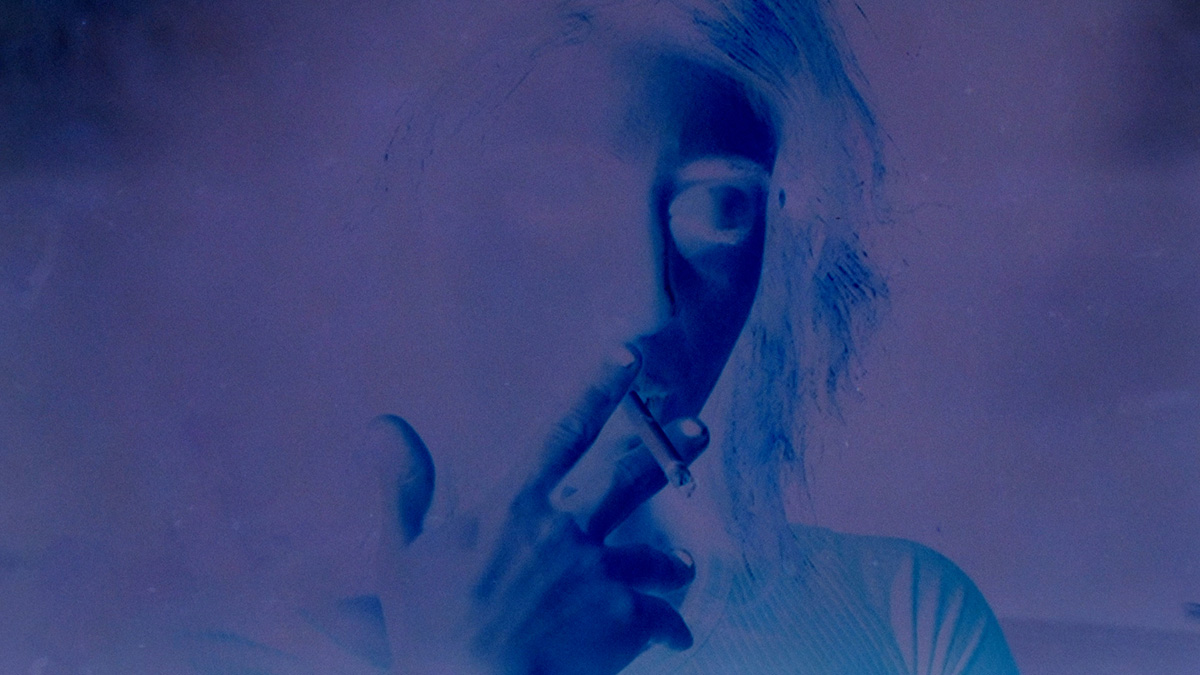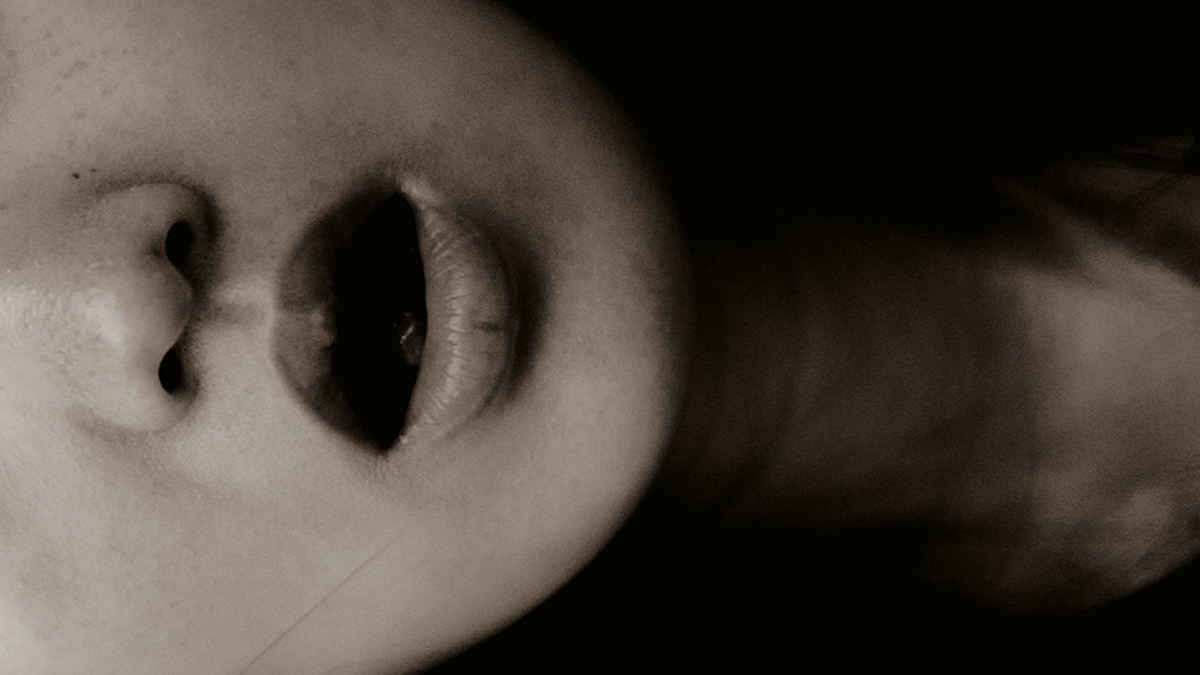Spectacle of Intimacy: Bodily Landscapes and Resistance in Mast-del and Lotus-Eyed Girl

Critics Campus 2023 participant Erika Lay analyses Maryam Tafakory’s Mast-del and Rajee Samarasinghe’s Lotus-Eyed Girl – two short films that each use the body to interrogate how erotic desire and national identity alike can be constructed and subverted via the act of looking.
The body is a multivalent, contested subject of representation – framed by the image, its surfaces can be disclosed or foreclosed, inscribed in the mise en scène or obscured, reclaimed or reimagined. When prostrated before the voyeuristic gaze, it can serve as an object of desire; alternatively, it may be obscured, its contours abstracted and sublated – or even dissevered from the frame itself – in deference to state proprietary and censorship codes. Yet these two representational modes can also coexist within an image. In a politicised cinema that encodes resistance in desire itself, the image of the body might instead appear as simultaneously sensual and abstracted, beyond visibility and legibility, making the viewer complicit in the spectacle of intimacy.
Suturing documentary, archival and found footage, the filmography of Iranian director Maryam Tafakory meditates on the visual poetics of desire, displacement and erasure. Her work engages in an ongoing dialogue with the proscriptions that, in the aftermath of the Islamic Revolution, were imposed around onscreen depictions of the female body in Iran; to this day, such representations remain a site of upheaval in relation to the boundaries of Iranian national identity. Implemented by the Ministry of Culture and Islamic Guidance as a set of “commandments for looking” between 1982 and 1983, new censorship guidelines prohibited – along with other visual codes of intimacy – scenes of physical contact between unrelated members of the opposite sex, as well as the return of a woman’s gaze towards the camera. Researcher and critic Negar Mottahedeh reads in these proscriptions an admission of the tactility of the visual: one that transforms cinema into the sensorial apparatus of the nation-state.
Extending Tafakory’s dialogue with post–Islamic Revolution Iranian cinema, Mast-del (2023) superimposes dual scenes of intimacy – one image-based, and the other consisting of fragments of written text – that mirror each other in their violent denouements. Comprising a series of photographic negatives, the first layer depicts shifting silhouettes of unclothed female bodies, whose imprints are produced by objects of foreclosure (veils, doors and sheets of cloth); while the second, textual, layer of epigraphic narration recounts a woman’s confessional recollections of a date. The narration consists of a series of displacements, terminating with an act of state-sanctioned violence, as the shifting skins of female bodies tussle, intermingle and then spool beyond the bounds of this negative space.
While Tafakory’s previous works have delved into the visual allegory of the gaze as a form of physical contact, Mast-del extends this metaphor of desire over the confessional act of representation itself: when desire is mediated by its prohibition, capable of being delineated only through negative silhouettes, erotic potential lies in the shifting interplay between acts of foreclosing and disclosing the body.
If the mimetic theory of desire rests upon the moment of bodily recognition, then Mast-del displaces the position of the voyeuristic spectator through a sequence of poetic misrecognitions: a bare stomach that first appears as an expansive plane of unfiltered snow, before shifting more clearly into view; a half-opened door initially presented as the negative space of the frame until we see the shadowed silhouette of an eye. This is less the resistance of the body that returns the gaze than the resistance of the body that crosses the boundaries of that gaze before its subsequent recognition and prohibition – a manoeuvre that implicates the spectator both as already complicit in the visual spectacle of intimacy and subordinated to the erotic content of an object. By prefiguring the presence of the body in images of the non-body, Tafakory is constructing a visual allegory: one that not only suggests the erotic potential of inanimate objects, but also argues that the visual spectacle of intimacy occurs before any act of recognition – in the moment of looking itself.

Above: Lotus-Eyed Girl | Header: Mast-del
Whereas Mast-del reimagines the body of a nation through an archive of images, Rajee Samarasinghe’s Lotus-Eyed Girl (2023) is a fractal memoir of national identity. US-based Sri Lankan filmmaker Rajee Samarasinghe, whose previous work has centred on critiquing the ethnographic gaze, situates Lotus-Eyed Girl in dialogue with a medieval Sanskrit text. Based on the 11th-century Kashmir poet Bilhaṇa’s erotic poem Caurapañcāśikā, which soliloquises the imprisoned author’s desire for the legendary Princess Yāminīpūrṇatilakā, Samarasinghe’s film reimagines this eroticised object of desire as part of a broader Sri Lankan national consciousness. The short consists of a montage of disembodied scenes and landscapes: the recurring image of an endless stream of pomegranate arils spilling out of a woman’s mouth, later transposed as a faded spectre on mountainous terrain; the silent foliage, with its dappled interplay with white light; and the rapid-fire litany of hands aligning fabric through sewing machines, evoking the global undercurrents of textile labour relations.
In refiguring the female object of desire within a national context, Samarasinghe is less concerned with contesting a gendered reification of national identity than with the possibilities of distorting an established erotic order. Yet, in holding a psychogeographical mirror up to the national consciousness, Lotus-Eyed Girl also gestures towards the violence that has been wrought upon Sri Lanka across decades of civil war and British colonialism by evincing the ghostly perturbations and dislocations of the latent unconscious, the spectre of which emerges on the screen in disembodied shots of urban psycho-horror. Erotic visions of the body become rimmed with hints of the uncanny: the arils morph into a stream of red; the apparition of a funeral scene flits into view; and fractal mandalas spiral spasmodically to harsh sounds of construction, denoting the passage of urban development. In distorting its framed object of desire, Lotus-Eyed Girl alienates traditional relations of voyeurism by gesturing to a history of bodily violence that lies beyond what is visible, the viewer’s attention directed instead to the political forces that underlie that desire’s construction.
Through their displacement of the dominant relations of viewing and desire in cinema, Mast-del and Lotus-Eyed Girl form a poetic compendium of visual languages of object and spectator positions that encode alternative visual orders of resistance. These are also forms of resistance that can be mounted in counterpoint with one another: in Mast-del, Tafakory gestures towards the poetic ambivalence of the subject–object binary, eroticising the non-body by exposing the body within; while in Lotus-Eyed Girl, Samarasinghe performs the opposite but analogous movement of undercutting the erotic potential of the bodily text. In tandem, the two films offer a praxis of resistance against state-imposed viewing relations – one that, necessarily, implicates the screen as a site of national contest.